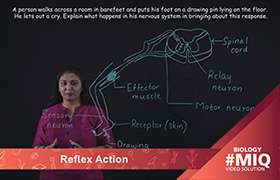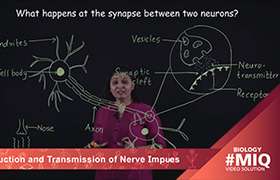CBSE Class 10 Answered
The middle ear is the portion of the ear internal to the eardrum, and external to the oval window of the cochlea. The mammalian middle ear contains three ossicles, which couple vibration of the eardrum into waves in the fluid and membranes of the inner ear. The hollow space of the middle ear has also been called the tympanic cavity, or cavum tympani. The eustachian tube joins the tympanic cavity with the nasal cavity (nasopharynx), allowing pressure to equalize between the middle ear and throat.
The inner ear is the innermost part of the vertebrate ear. It consists of the bony labyrinth, a system of passages comprising two main functional parts:
- The cochlea is dedicated to hearing
- The vestibular system is dedicated to balance


We hope that clarifies your query.
Regards
Team
Topperlearning












